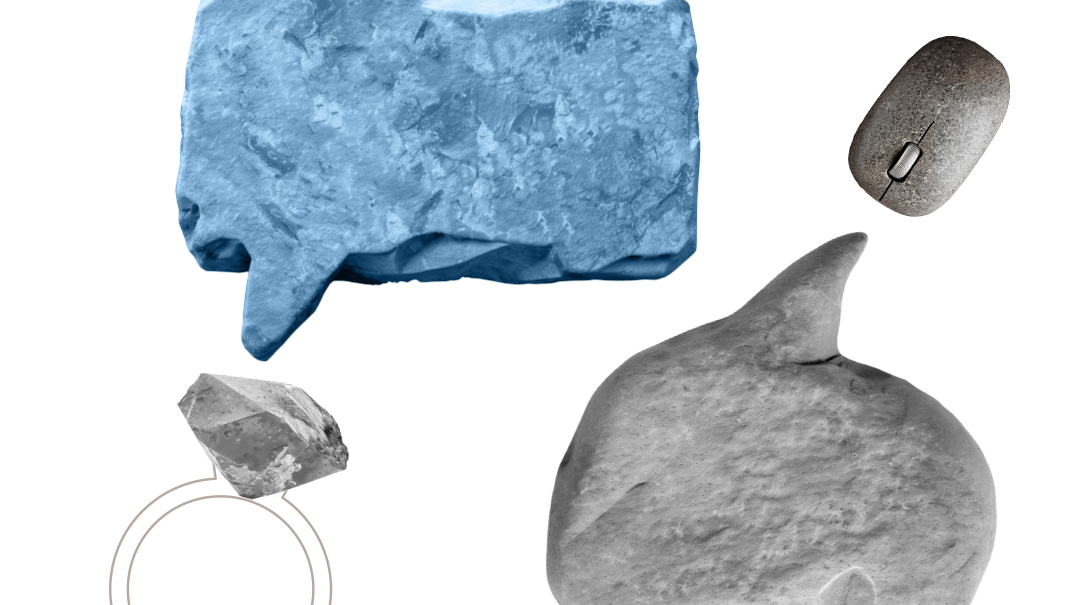Take Your Pick

How can we help our children become effective decision makers?

Maximizers and Satisficers
Barry Schwartz, a Swarthmore psychology professor and author of The Paradox of Choice, has broken mankind into two camps. There are the maximizers, who scrutinize every option, and satisficers (a made-up word that combines “satisfied” and “sacrificed”), who are happy with decisions that are good enough.
Since there are always more options out there — sometimes, an infinite number — it can take an enormous amount of time to make “the best” decision.
Maximizers agonize over every possible option and then suffer from anticipatory regret (“What if the store gets an even nicer coat next week?”) and post-decision regret, mourning the options they nixed.
A satisficer looks around the store, makes a decision about what to buy, and is pretty happy with his choice. Maximizers wonder why any sacrifice needs to be made when it comes to decisions. They ignore the biggest sacrifices they make — the time, the effort, and the emotional pain of their regret.
Schwartz says satisficers are happier and that parents should teach their children that “good enough is almost always good enough.” That doesn’t come easily to most parents.
“I’ve never heard a parent say, ‘I only want my children to have whatever’s good enough,’ ” he says.
Schwartz suggests that parents pay attention to how their children make decisions. If their children are maximizers, be aware that the more options they have, the greater their tendency will be to maximize. Give young children a few acceptable choices. Help older children look at all the options and then help them discard the least likely ones. Once they’ve made their decision, encourage them to talk about what they like about the choice they made to stave off anticipatory and post-decision regret.
The Five-Step Method
Dr. Shoshana Isenberg, a psychologist at the Specialized Children’s Hospital in New Jersey, teaches children a four-step process for making decisions. “It applies to all problems, from a lost house key to social problems,” she says. The steps are:
- Stop: Don’t just follow your impulses — make a deliberate decision.
- Define the problem, rather than just reacting to it.
- Brainstorm: Generate five or ten possible solutions, even if some of them are bad. Research shows that kids who can come up with many solutions are better at problem-solving.
- Consider the consequences of each solution: If someone pushes me, what might happen if I respond by crying, or telling the teacher, or ignoring it?
“As the Rambam says, shoot for the middle path,” she advises. “Neither extreme — over-thinking or under-thinking — is good.
“There are impulsive children who have to remember to stop and think. If they’re little, I’ll play games like ‘Stop on a Dime’ to teach them that they can stop, even when they’re running. When it’s quiet, impulsive children can choose as well as anyone. Their problem is that in real time, they respond too quickly and have already acted before thinking.
“On the other hand,” she continues, “some children have so much trouble making decisions, it becomes an anxiety issue; they overestimate the risk, and it paralyzes them. I tell them that being too afraid to make a decision is also a decision — a decision that they’re not willing to take a risk. That has its own consequences, and they may not be the consequences they would have chosen. I have these children practice jumping into low-risk situations so they can see that it’s okay to make a bad decision sometimes.”
Dr. Isenberg often tells children who are fearful of making a bad decision about an experience she had when she was ten.
“I was a mediocre gymnast who got onto a competitive gymnastics team,” she says. “I didn’t think too much about it until the day of our first meet. I was terrified and wanted my mother to call the coach to tell her I was sick, but my mother said, ‘You’ll have to call her yourself and tell her what you’ve decided.’ I didn’t want to do that, either.
“ ‘What’s the worst thing that could happen if you go?’ my mother asked.
“ ‘I’ll get a one [the lowest possible score],’ I answered. I was afraid of failing, but I was also too ashamed to tell coach I was chickening out, so I went. I got ones in several events, and to my surprise, I discovered that it was liberating! I failed, but I lived through it.
“Since then, whenever I’m afraid to do something, I tell myself, ‘So I’ll get a one. I’ll live through it.’ ”
Through the Back Door
Playing games is a good way for children to practice decision-making; almost every game involves decisions, from tic-tac-toe to memory cards.
Keep peace in the car by asking rhetorical questions that encourage thought-out decision-making: “If you were stuck on a deserted island and could only take three things with you, what would they be?” and then have them explain their choices. Next, discuss their choices: “If you take those three toys, what will you eat? Could you find batteries for them on the island? Where would you sleep?”
Or talk about last night’s bedtime story: “Why did Shira decide not to go into the woods? Would you have gone? What might have happened then?”
With older kids, discussions can be more fun. Look at an ad or read a magazine article with them and ask them why they like or don’t like it. Ask questions that promote astute thinking: “What do you like about that?” “Why do you think that’s the best option?” “How would this work?” Having them use concrete evidence to support their opinions lays the groundwork for thoughtful decision-making in the future.
Model the Process
Thinking out loud while making decisions — from what to make for supper to where to go on Chol Hamoed — allow your kids see how you make them and what factors go into a thoughtful decision.
Dr. Angela Duckworth, founder and CEO of Character Lab, whose mission is to advance scientific insights that help children thrive, relates an incident from her childhood.
“I was about ten when my parents decided to move our family across town,” she recalls. “Why? I had no idea. The decision was just announced one night, and we kids learned that we’d be packing up our house, changing schools, and settling into a new neighborhood within the month.” Instead of telling the children why they’d made that decision, her parents sat together at the table and whispered.
“New research shows you can learn to be a better decision maker by watching others navigate their choices. Reading about rules and strategies is one thing, but observing someone else apply them in real life is far more effective. And who better to model the process for young people than their parents?”
See if you can get your children to make their decisions out loud sometimes, so you can talk about their decision-making style, and open their eyes to considerations they may not have thought about. If they’re thinking of skipping a birthday party because they’d rather spend the day biking with a friend, talk about how the birthday boy might feel. The earlier children learn to think about the effect their decisions have on others, the better.
When it comes to big decisions, let them know that it’s best if it’s a collaborative decision. “This is an important decision,” you might tell them. “This is the kind of decision we should discuss together before you make it.”
Living with Bad Decisions
If you see your child making a bad decision, it isn’t always the wisest approach to jump in and save them from it.
“Children often learn best from their mistakes,” says Grace Berman, clinical social worker for the Child Mind Institute.
“When decisions turn out badly, resist the temptation to shield the kids from difficult emotions. Those painful feelings give us feedback to help us make the right decisions. They’re not dangerous. We need to let kids experience the consequences of bad decisions and work through them.”
For example, she says, don’t rescue your child if he wants to spend his money on a toy that will break soon or quickly become boring, or if he decides to spend his evening talking on the phone instead of studying for a test. Stay calm and help him learn from his mistakes: Instant gratification and long-term gain don’t play together nicely.
One of the hardest things for parents to do is let their children make their own decisions. But kids learn to make good decisions by actually making them, not by following directions. If your child has a meltdown every morning when deciding what to wear, you might want to present her with two or three choices, instead of a whole closetful, but leave the final decision up to her. It can be helpful to let her know, later in the day, when she’s calm, that some decisions are less important than others.
Parents also need to learn to stay calm as they watch their child stumble through the process of making a decision. A parent’s emotions can fan the flames of stress. It helps to remember that the important thing isn’t what is chosen; it’s that the child learns to make independent choices.
Teach her a trick that some adults use: Unimportant decisions can be made by flipping a coin. Not because a coin makes better decisions than she does, but because, in that brief moment when the coin is in the air, she’ll suddenly know which outcome she’s hoping for.
If there’s a pattern of your child making bad decisions, you may have to help him see it. Ask “How’s your homework situation going?” or “How’s that new friend working out for you?” Once she sees that there’s a clear pattern of her making poor choices, you can help her see how her decisions aren’t working for her and help her create a new plan of action.
If you ask a tween if she’s ever done something stupid, she’ll say yes. But she probably never thought about why she did it. A casual conversation about why people make poor decisions means that when she has to make a quick decision in the future, she’ll be on the lookout for the usual stumbling blocks — peer pressure, immediate gratification, and going with the flow.
Teen Talk
In adolescence, the brain strengthens its connections by pruning away the unused ones and reinforcing the others. This process starts at the back of the brain and creeps forward, reaching the decision-making part of the brain last.
While the front of the brain is under construction, teens rely on a central part of the brain, the amygdala — which triggers and is triggered by emotions and impulses — to an extent that mystifies and horrifies adults. That contributes to adolescents’ spontaneity and courage, which is what we call it when their impulsive decisions turn out well. When the outcome isn‘t so good, we may need to remind our teens to stop and think before deciding on a course of action.
The strongest influence on teen decision-making is peer pressure, which can make teens as confused as a chameleon in a bowl of jelly beans. As they become more independent, they spend less time with their families and more with their friends. Studies of teen driving show that teens don’t take more risks when driving than adults do — unless they have friends in the car. Hypersensitive to both their friends’ criticisms and their approval, they’re three times more likely to take risks when friends are riding with them.
Peer pressure can’t be avoided. Dr. Isenberg says that “to go at it alone isn’t who most people are. It’s almost unrealistic to expect it from a teen.” Rather, she suggests emboldening teens to create a group of friends who share their values
Delay tactics can be effective, too. Instead of giving a negative answer to their friends on the spot (“No, I can’t go on a road trip with a driver who doesn’t have a license”), encourage them to say, “I have to think about it.” That might make the eventual “no” easier to say because they’ve already given their friends a heads-up that their decision could go in either direction.
Talk to your teen about having a plan before heading into a peer-pressure-packed situation. Help him compose a mental script so he knows what he’s hoping to say and do, and let him know that his brain works differently when he’s alone.
Teach your teen to ask her intellect, “Would I make a different decision if I followed the crowd or listened to myself?” Teach her to ask her heart, “If I question where the herd is headed, will I be left out, or admired as a person of principle?” Perhaps a mind picture will help her stand up for herself. Tell her to think about a stream — only the dead fish go with the flow, and dead fish are kind of gross.
Balanced Decisions
Dr. Isenberg has good advice for a problem that’s always bothered me. When making a decision, how do I know how much weight to give each item on my list of pros and cons?
“”It’s helpful to talk about what’s important to the decision maker,” Dr. Isenberg says. “Let’s say your daughter’s friend hurt her feelings, and she can’t decide if she should say something, or if she’s just making a big deal about nothing. Discuss the bigger issue: How much does she value this friendship? Does she value it highly in spite of its difficulties, or does this friend often make her feel bad, and she’s thinking she’d be happier without her? That will give her a better way to gauge the right decision.
“It’s often helpful for teens to have mentors,” she continues. “Not parents, because there’s too much baggage with parents. It could be someone in her class who has qualities she wishes she had. The mentor doesn’t even have to be her friend, just someone she knows well enough that she could reasonably answer, ‘What would that person do in my situation?’ Would she say, ‘Thanks, but no thanks’?”
Rebbetzin Esther Rabi (disclosure: my aunt-in-law), the founding headmistress of Stamford Hill’s Satmar grammar and elementary schools, says that even young children are able to understand Mesillas Yesharim’s mashal about the wise men in the tower in the middle of the maze, who have the wisdom to guide those who are lost in the maze. “Let your kids know that everyone should have a rav who can advise them when they don’t know which direction to go.”
Teaching your child to make decisions well is a gift that will keep giving all through his life.
(Originally featured in Family First, Issue 772)
Oops! We could not locate your form.






